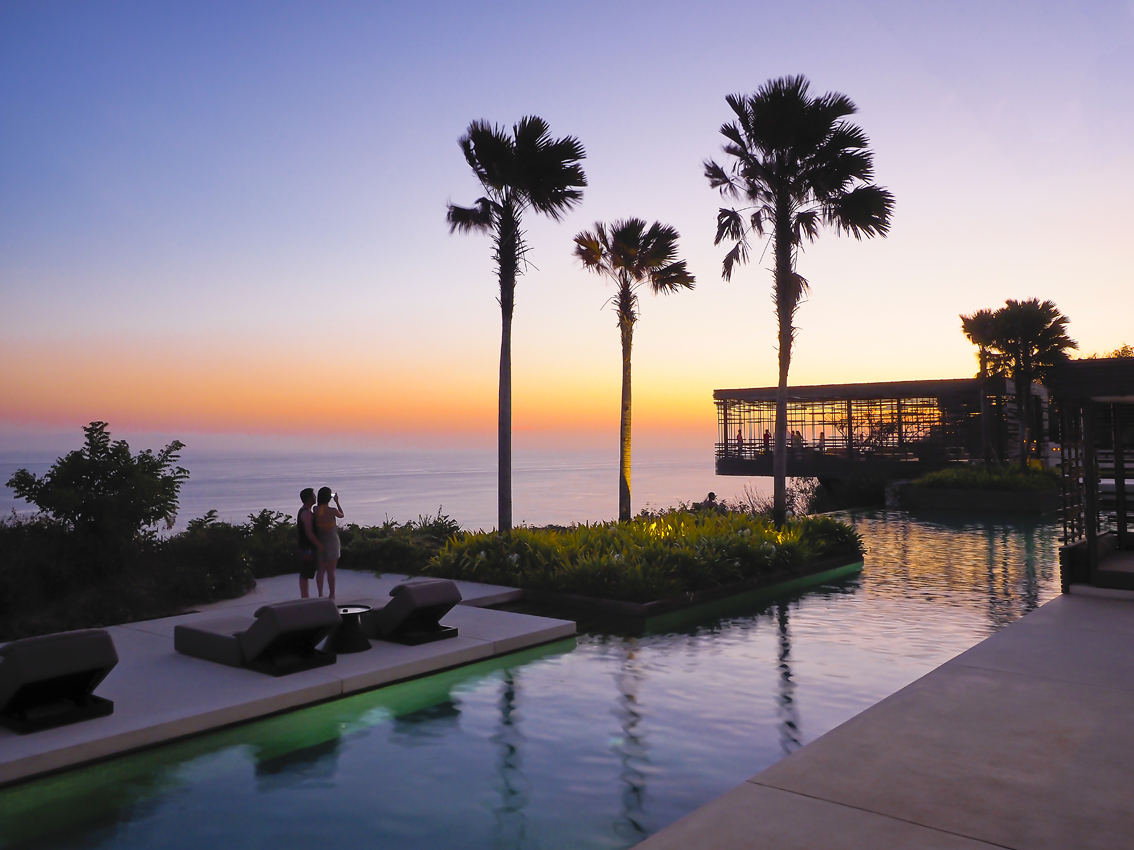Resort photographer Minoru Masushima has been introducing the splendor of Southeast Asian resort hotels to many women’s magazines and books since the 1990s. In July 2022, he had photographed more than 600 hotels, which is a great achievement for a Japanese photographer. We interviewed Masushima about his 30-year involvement with Asian resorts and his encounters with them.
Enchanting Asian resorts that blossomed in the 1990s
– How did you get started as a resort photographer?
At the end of the 1970s, Japan was experiencing a pension boom, and I honed my skills by photographing pension interiors, mainly for travel and resort features in women’s magazines. Later, in 1983, I visited Carmel and Monterey on the U.S. West Coast to photograph country inns that had been renovated from traditional old buildings. I was impressed. That was the beginning of my immersion in hotel photography.
It was in the 1990s that I began to pay attention to resorts in Southeast Asia. Amanpuri, the first Aman resort, was built by Adrian Zecca, one of the pioneers who built the dawn of Asian resorts, and became synonymous with luxury resorts. Zecca went on to open the Amandari in Ubud, Bali, Indonesia. Around the same time, the Four Seasons also soft-opened in Jimbaran and was very well received. At the time, the maximum time required to cover a single hotel for a magazine was half a day, and in an age without the Internet, I wanted to see with my own eyes the Bali resorts that were the talk of the town and take photos to satisfy my own needs. I prepared about 100 rolls of film and set off for Bali.
Staying at a 5-Star Hotel in Bali
I was captivated by the charm of the architectural design
-That was your first real encounter with Asian resorts. What in particular attracted you?
I stayed at the Four Seasons Resort Bali at Jimbaran Bay, The Oberoi Bali, and Amankila.
The Four Seasons has 147 villas on a hillside overlooking the bay with private plunge pools. This facility was the first of many private villas with pools to be built in Bali in later years. Each villa has a main house with a lovely bed and bath, and an accompanying traditional Balinese “Balinese Balinese bath”. The accompanying traditional Balinese “bale” was a tasteful living and dining set-up with views of landscape architect Made Wijaya’s mini-garden and plunge pool. I still consider the Four Seasons Jimbaran Bay to be a masterpiece of private villa living in Bali.
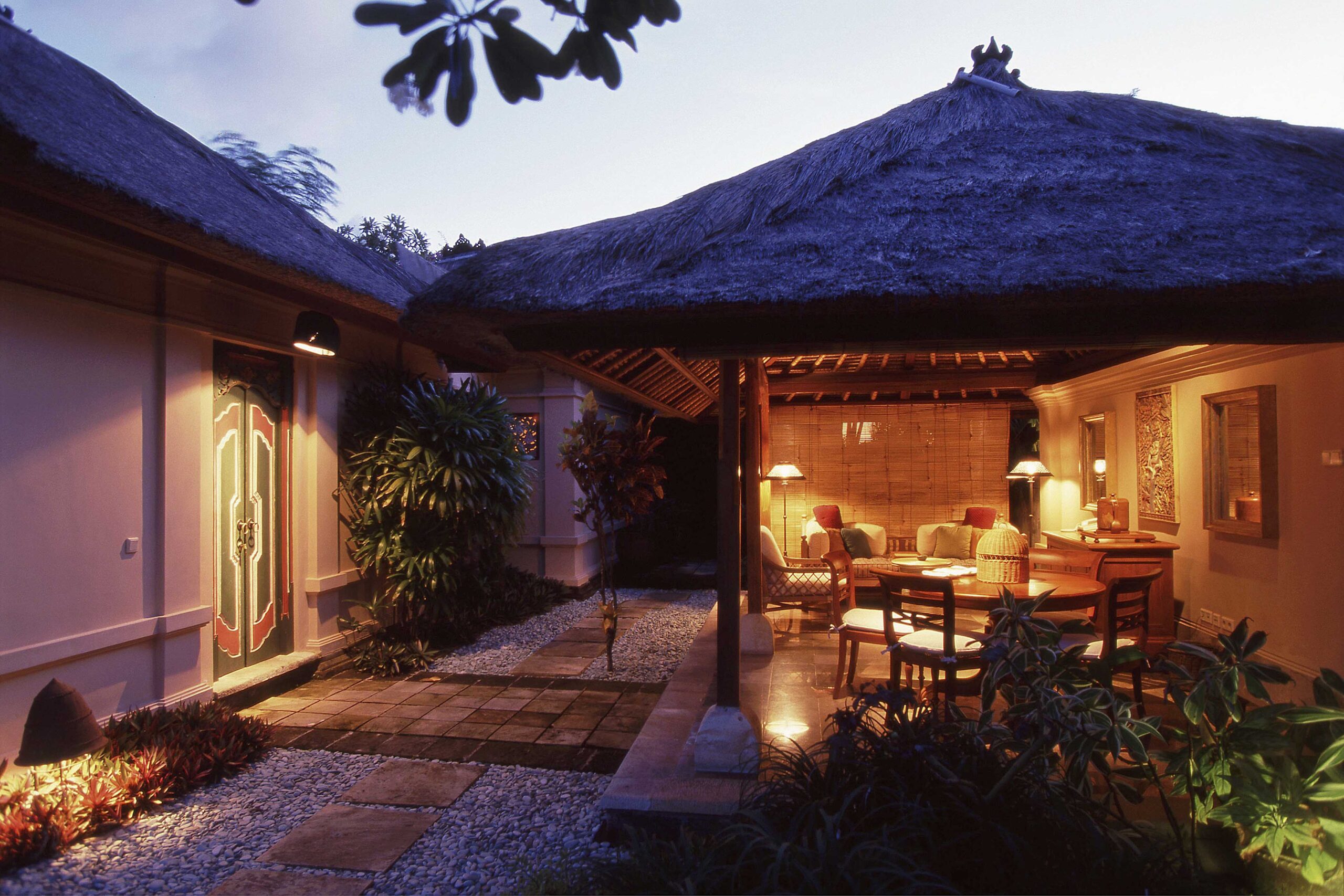
The Oberoi was designed by Peter Muller, who also designed Amandari. Inspired by the culture of Bali, this Australian architect also interacted with Zecca and other architects. Located in the bustling Chandidasa district, Amankila is famous for its main building, inspired by the Ujung Taman “Royal Palace of Water,” and its three-tiered pool inspired by a rice terrace, both designed by Ed Turtle. I have fond memories of having the pool all to myself during my stay.
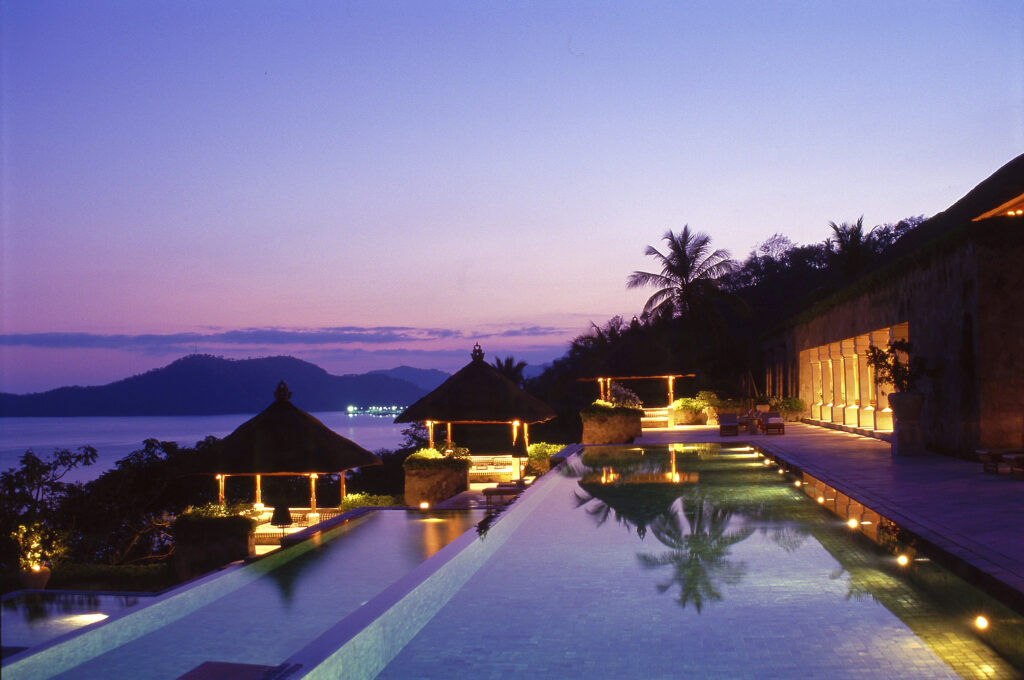
A common architectural feature of these traditional Balinese hotels is that the roof is thatched Alang-Alang. The pillars of the building (even the bed posts) are carved with a design resembling a lizard’s nose called Ukiran Bali. The ceilings are beautiful (inga inga) with radiant bamboo braided together. I was able to see architecture that respects traditional Balinese culture everywhere in these three houses that I photographed for the report. I was fascinated by their beauty. The concept of resort architecture is completely different from what we see today.
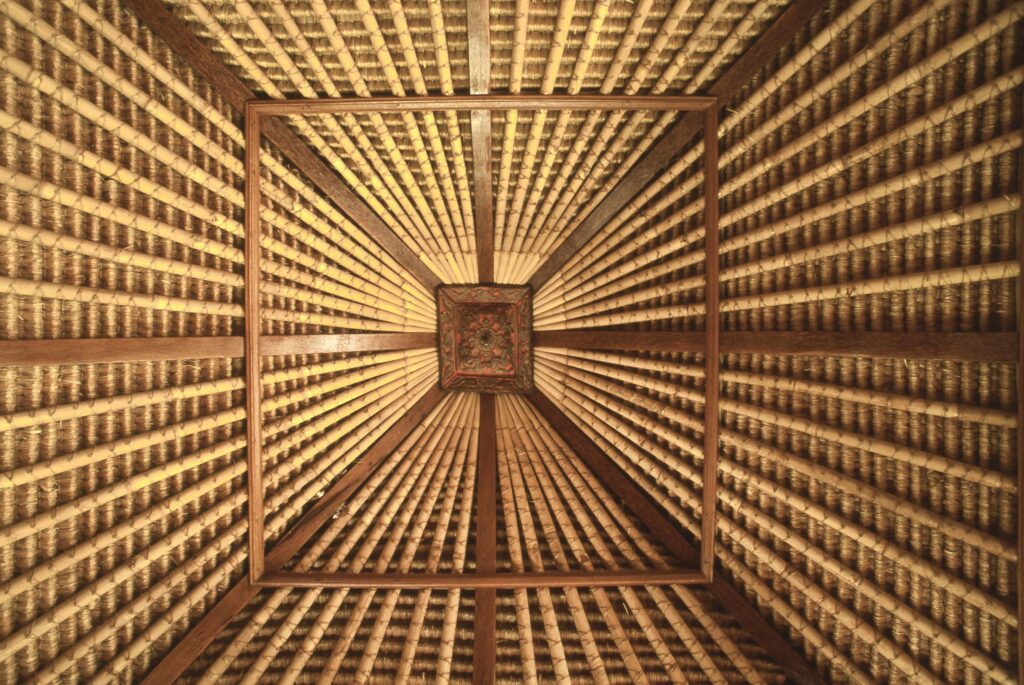
Impressed by the architects’ respect for culture and tradition in their designs
– Will you name one Asian resort architect who has impressed you the most?
It is very difficult to single out just one, but I would have to say Bill Bensley, the genius of resort architecture. He is an American, but since moving to Bangkok in the late 80’s, he has built numerous resort hotels and private residences in over 30 countries.
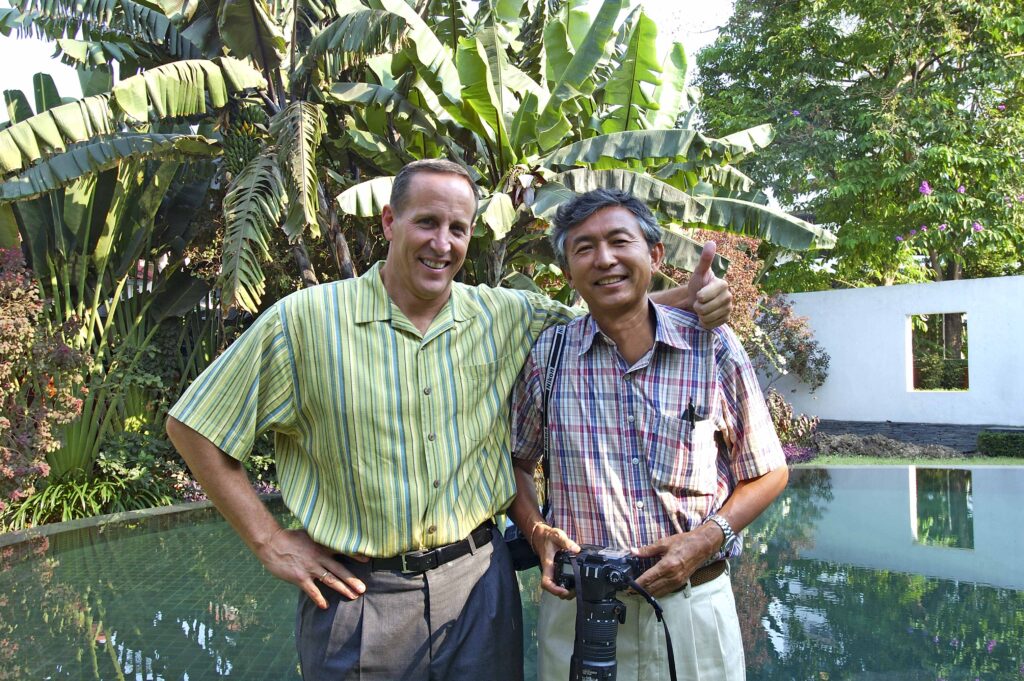
The Bensley Resort features a thematic concept. Also, not a single view is the same in the resort. And the large deformed statues are also an eighteen. In the 1990s, he teamed up with his partner, Lek Bunnan, and worked mainly on landscapes. An early masterpiece is the Novotel Lombok in Lombok, Indonesia. Later, the Kirana Spa in Bali, four Four Seasons in Malaysia and Thailand, Indigo Pearl in Phuket, and since 2010, Bensley Studio Work, including InterCon Danang/Viet Nam and JW Marriott Phu Quoc/Viet Nam, have been outstanding.
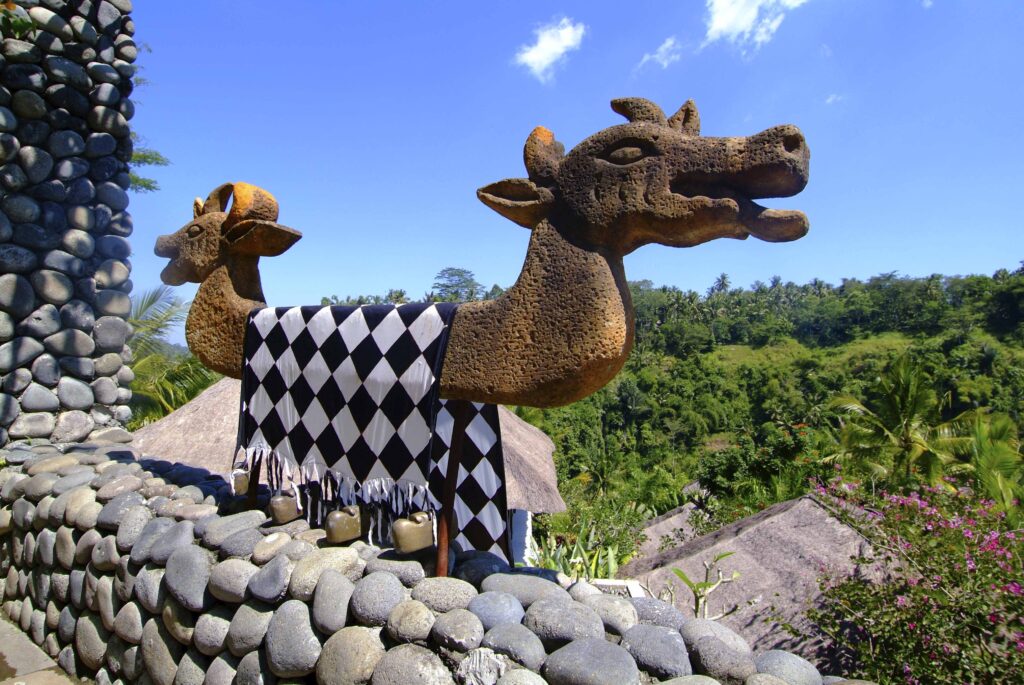
– What is the most attractive thing about Asian resorts that you want to convey through your photography?
It is the “culture” of the ASEAN countries themselves. All of the architects named in this conversation work with great respect for the indigenous culture, history, and traditions of the various regions of Southeast Asia. I consider the tropical climate, religion, food culture, and the friendly, open-minded people of the region to be all part of the “climate.
Even the Lanna Hotel in northern Thailand, which I have been photographing for the past 10 years (a hotel decorated in the style of a temple of the Lanna dynasty, which flourished from the late 13th to 16th centuries), has a deep sense of faith in and reverence for Buddhism that has been passed down from generation to generation. I consider it my life’s work to convey to the people of Japan through my works what is important and deep at the root of such culture.

Minoru Masushima
Born in 1948 in Tokyo. Graduated from Tokyo Polytechnic University, Faculty of Engineering. Member of the Japan Professional Photographers Society. Has been reporting and photographing Asian resorts for nearly 30 years, from the mid-1990s to the present. Published many photo books including “Colonial Hotels in Asia” (PARCO Publishing), “Etsuraku no Bali” (JTB Publishing), “HOTEL INDOCHINA” (Shueisha), etc. Published “Welcome to the Lanna Hotel: Chiang Mai’s Lanna Hotel and Temple Decoration” (Shueisha International) in 2008, is the culmination of 10 years of research and photography.
Interview and text by Fumiko Koshimoto
Photo by Minoru Masushima.


